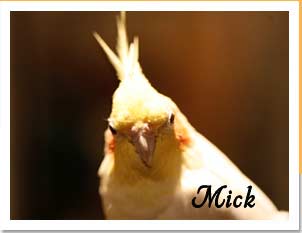Bailey's New Home
By Cindy Goral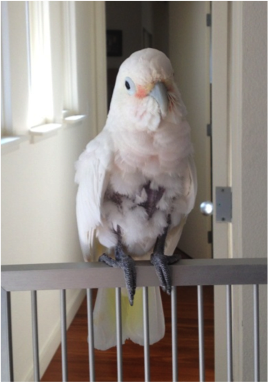 |
This is the story of our adoption of Bailey, a 16-year-old Goffin’s Cockatoo. We’ve been a bird family for decades. I grew up with a canary and a budgie, and later in graduate school had zebra finches and a budgie. When my husband and I moved to California, we ended up adopting a one-year-old African Grey, Max, from a co-worker who was a “cat” person and really didn’t know what to do with a bird. We had a cockatiel for a while, and also an Amazon parrot but had to find another home for the Amazon when we had a human baby. View PDF in new window |
Featured Volunteer: Fred Cox
By Shauna Hill |
One of the wonderful things about Mickaboo’s organization is its volunteers' ability to step up and help out when the need arises. “Stuff happens” every day and we don't always stop to appreciate how vital all of our hard working volunteers are. We heard about Sherry Helms in our last article about how one volunteer came to her assistance when she needed help with the Eclectus Coordinator duties. It's time to get to know that awesome volunteer a little better. He's Fred Cox, our Interim Eclectus Coordinator and Lovebird Coordinator for Mickaboo. Let's take some time and learn more about Fred. View PDF in a new window |
What’s the Problem with Pigeon Feet?
By By Elizabeth Young, Founder of MickaCoo Pigeon & Dove Rescue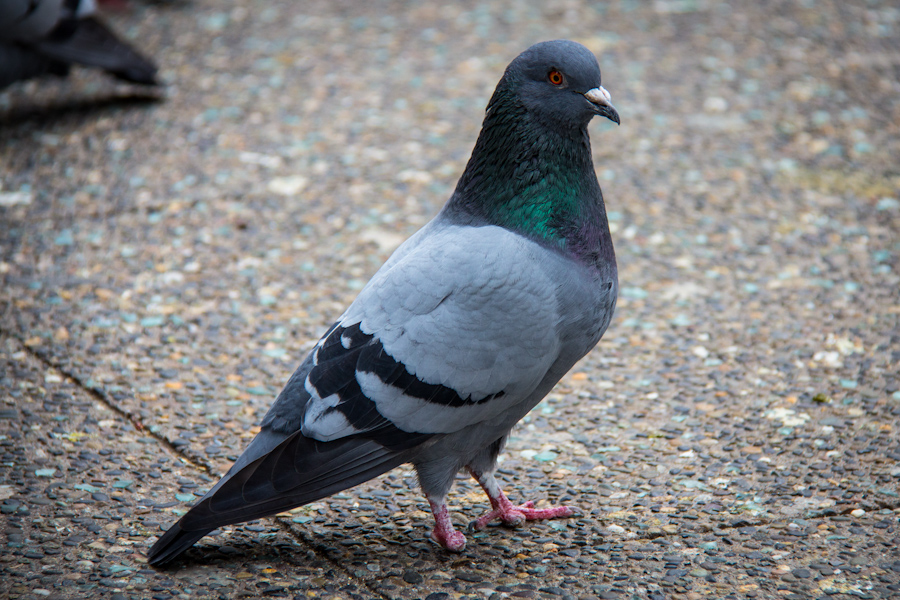 |
Anyone who spends time around feral pigeons has probably noticed birds with injured or missing toes and feet. One of the most common problems that feral pigeons have is something we call “stringfoot.” Pigeons need twigs, straw or hay to build nests, but in urban areas, they are more likely to find string, wire and human hair. When they spend 12 hours of every day for 4 weeks out of every 7 in their nests, their toes become entangled in the nest materials, which leads to constriction, necrosis, infection, etc. If you can catch and untangle these poor birds (or get them to a pigeon-friendly wildlife rescue like WildCare), they can recover and survive very well, even with missing toes or stumps for feet. View PDF in a new window |
Birdy Boredom be Gone!
By Lucy Macmillan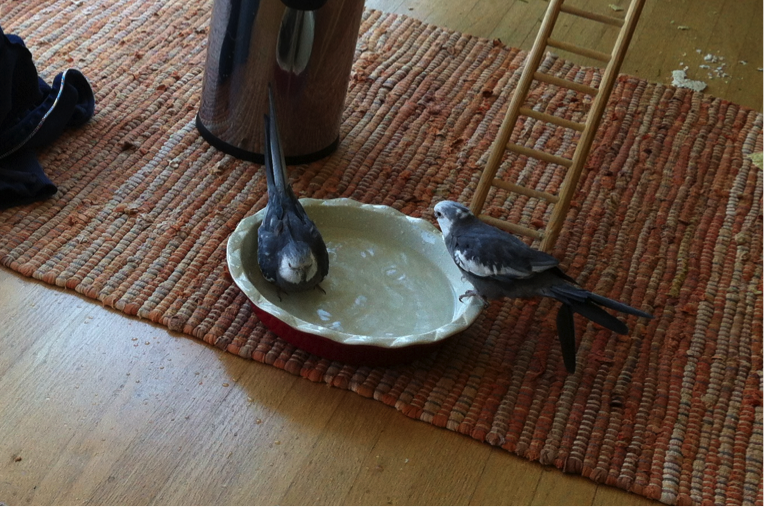 |
Your bird is bored! How can you tell? It may pluck, bite, screech, or sit dumbly in the corner of its cage. A bored bird is generally an unhappy bird, which can lead to a number of behavioral and health issues for our feathered friends. In the wild, birds have plenty to keep them busy between watching for predators, gathering food, finding a mate, migrating with its flock, building a nest, and caring for its young. Our companion birds are not so fortunate to have all the natural stimulations and associated learned survival skills that wild birds do. Here are some ideas for entertaining your companion birds while you’re at home or while you are gone during the day, to spice things up for them in their modified habitat. View PDF in a new window |
Announcing New Website – and More!
By Pamela A. Lee |
Mickaboo is transitioning its website to newer technology. The new website will be more easily used on devices like smartphones and tablets. View PDF in a new window |
Bird of the Month
By The Editor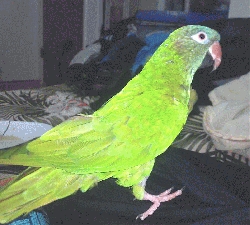 |
Feeling blue?? Maybe I’m just what you need! Hi, I'm "Blue" a BLUE-crowned conure. I have been with my current family for nine years, but they are having a human baby now and don't have the time for me that they used to. Read More....... |
